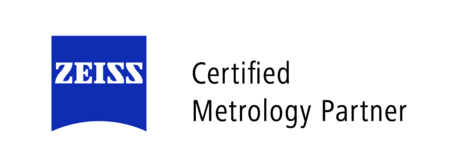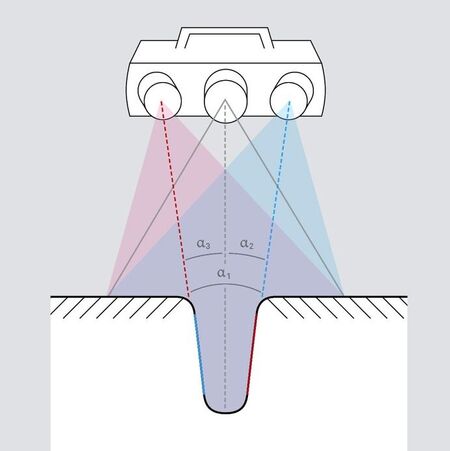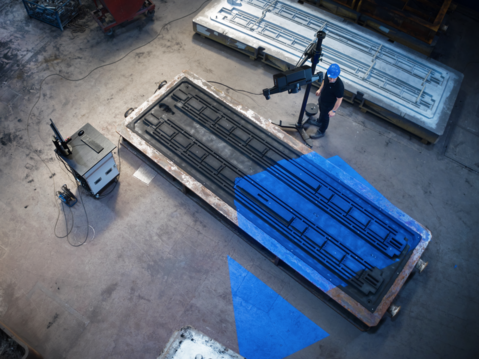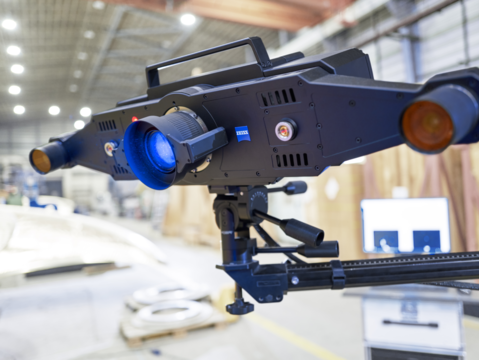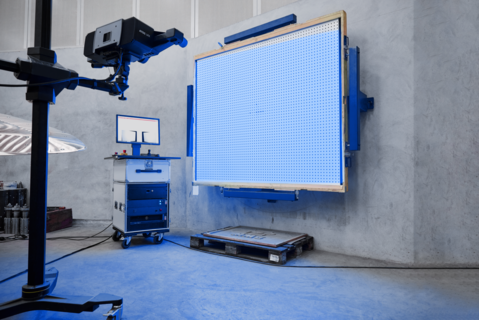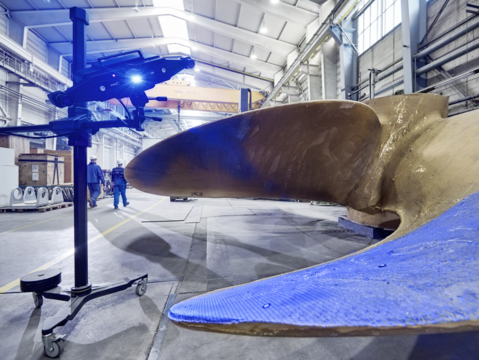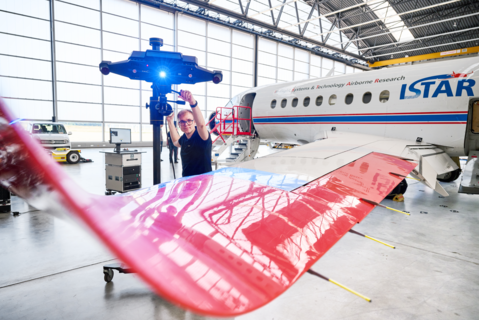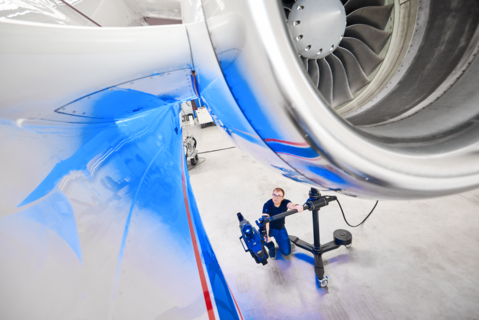ATOS LRX
High-end 3D scanner for measurement of large parts
The ATOS LRX provides fast, accurate and complete data capture of large measurement areas. This high-end 3D scanner is equipped with an ultra-sharp laser light source and a measurement area of up to 4 m2, capturing up to 2 x 12 million coordinate points in a single scan.
This means that the 3D scanner streamlines the measurement process of very large objects such as castings, ships, aeroplanes and wind turbine blades.
With the ATOS LRX you get high resolution even for complex geometries and a robust design suitable for industrial use.
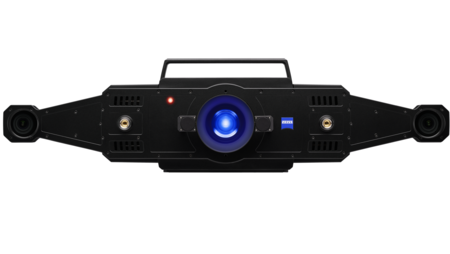
The robust design of ATOS LRX ensures reliability and precision even in harsh production environments. It is protected against dust and water splashes, and its self-calibration function ensures that the system is always ready for use.
This makes ATOS LRX suitable for industrial environments where it is often necessary to operate in challenging conditions. The integrated sensor that monitors the calibration status further contributes to the reliability of the system and reduces the risk of errors during scanning.
ATOS LRX provides maximum safety in manual operation despite the laser light: an integrated sensor monitors the safety distance to the user via radar and reduces the light intensity if necessary. The 3D scanner meets laser protection class 2, allowing the system to be operated without additional protective measures.
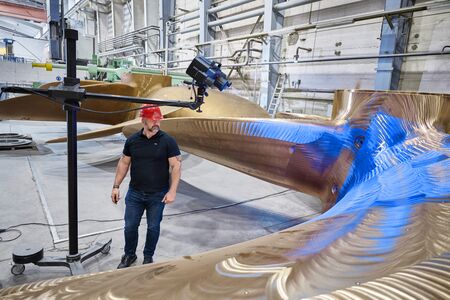
ATOS LRX is a versatile tool used in various industries due to its precision and efficiency. In the aerospace sector, the system inspects fuselage, ribs, tails and wings, and digitizes the outer skin of the fuselage for rivet and fit inspection.
In automotive, it digitizes clay models for car design and enables fast 3D scanning for crash testing. In the shipbuilding industry, ATOS LRX is used to digitize ship propellers and hulls for maintenance and repair.
In toolmaking and mechanical engineering, the scanner optimizes the design of parts and tools and speeds up quality control of large welded joints.
In wind energy, the system detects rotor blades, molds, and wind turbine housings, ensuring accurate production and maintenance of wind turbines.
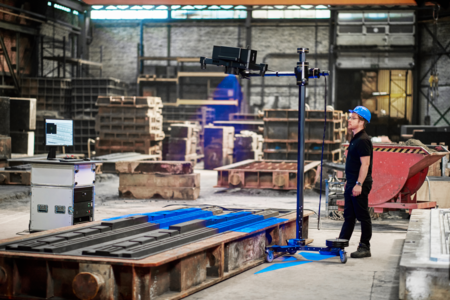
During scanning, a precise pattern of stripes is projected (fringe projection) on to the part's surface, and is detected by two cameras, calibrated in a stereo camera setup. Surface data is collected, where the camera rays intersect.
In this process, the projector in the middle is passive and only contributes by projecting stripes. By using Triple Scan Technology, the projector is used as a calibrated unit in the measurement. In this way it is possible to capture data by combining one camera with the projector unit.
The scanner thus collects data in the following ray intersections:
- Left camera / Right camera
- Left camera / Projector
- Right camera / Projector
Hence, the word Triple Scan Technology refers to the fact that three different methods are used for capturing data during the scanning process. As both cameras and projector are calibrated, all three elements are used to calculate the coordinates.
It is an advantage to use the Triple Scan Technology when scanning shiny parts, holes and complex geometries.
The projection unit in the ATOS scanner is based on Blue Light Technology, which means that the scanner projects light from a narrow-band blue frequency. Hereby, ambient light is filtered out during the scanning process and does not interfere during the measurement. The strong Blue Light source thereby result in an effecient and fast measurement.
| ATOS LRX | ||
|---|---|---|
| Measuring volume | MV2000 | |
| Camera pixels | 12M | |
| Setup | Manual | |
| Light source | Laser | |
| Changeable lenses | No | |
| Blue Light Technology | Yes | |
| Triple Scan Technology | Yes |
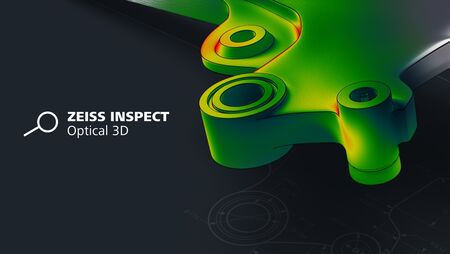
ZEISS INSPECT Optical 3D
ZEISS INSPECT Optical 3D er et ekstra softwaremodul til offline analyse og rapportering. Ved at tilkøbe en ekstra licens, frigives timer på scanneren og processen effektiviseres. Læs mere.
